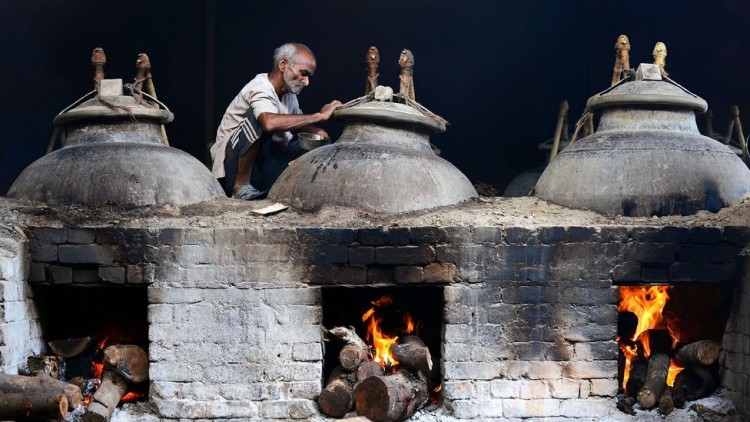
Each organism has an essence. This essence is essentially a form of Essential Oil. Essential oils are mainly Alcohol, Ether or Aldehyde. The Industry aims to capture the essence of different organisms. Initially, this essence was taken out in its condensed form only, i.e. directly essential oils were the end product of the distillation process. However, with time, it was observed that since the condensed form of the essential oils was very expensive, so not everyone could afford it. Also, since the condensed form was very strong so the smell stayed on for months after being applied even once. Thus, the practice of diluting the condensed form of essential oils was started. For this purpose, other essential oils were searched. The characteristics of other oils had to be such that its essence should not be so strong to lose the essence of the main oil. Also, it had to be such that it has an affinity with the main essential oils (to react). It was seen that Oilseed Oil (Tilli ka Tel) had a strong affinity for Jasmine essence and thus, could act as a base oil for carrying its essence. Also, Sandalwood oil had an affinity for almost all essences and its essence was easily lost upon reaction. Thus, it was found to be the most suitable as the base oil. "Head-space" aromatic molecules are the most subtle and refined of all the fragrant molecules exhaled by a plant during its life. The heat of even the most refined steam or hydro-distillation invariably destroys the finest of these molecules as they exist only at normal environmental temperatures and even then at a certain time of day. The Kannauj extractors were perhaps the first to know the importance of "head-space" aromatic molecules.
Today, the attars are being used in the following areas:
Attars of Rose and Kewra is used in traditional Indian sweets for imparting flavour. Attar is an expensive item with prices ranging from Rs 1,500 per kg to as much as Rs 10 lakhs per kg, and therefore, its market is very limited. These all-natural perfumes are offered in decorated crystal cut type bottles or small jewelled decanters. The most expensive Essential Oil is that of Oudh. This is made from the infected bark of the Oudh Tree. The bark of this tree when infected upon by a fungus becomes disintegrated. This is then used for this purpose. This takes around 3 months to mature.
Obsolete technology The technology employed for the extraction of essential oils from aromatic plants is primitive and obsolete. This results in low yield and poor quality of essential oils. The sandalwood oil extraction itself takes a week. Thus, there is a great need for attaining adequate technological capability in the area of processing essential oil plants. Despite being aware of the latest advancements, the industry is not keen on any modernisation and still uses the age-old, slow, laborious and labour-intensive process.
Lack of standardization The industry has been very reluctant to introduce any standardisation procedures and depends on smell alone. As a result, even within the same variety of flowers, there will be a difference in the aroma due to varying climatic and geographical conditions. standardisation products are not available in the perfume market, which hampers export as buyers abroad want exactly similar quality products every time they buy.
Low quality of crop yield There have not been notable efforts towards upgrading aromatic crop yield and quality through concerted agricultural research.
We Venkatramna Industry provide you the Essential oils and Attars as per Insutry Standards, if you have your specification do let us know we will be happy to assist you.

|

|
Currently, there are no comment.
Login to comment